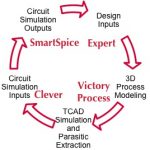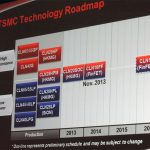If expanding industries typically indicate vibrancy, a race to acquire and consolidate is generally reflective of the opposite – a period of slowed growth in mature, once high-flying categories. And while many industries experience a period of stardom, followed by a sharp and steady decline, we should be extremely worried when… Read More
Electronic Design Automation
Semiconductor Usage Revolves Around Asia
I just read Daniel Nenni’s blog titled “Is Silicon Valley Gridlock a Good Sign for Semiconductors?” Dan, there is no definitive answer to this, I mean in terms of semiconductors. Let me call it Semiconductor Gridlock in Silicon Valley. Yes it’s good because Silicon Valley promotes research, brings up innovative technology and… Read More
Improve SoC Front-end Design Productivity
I have been involved in SoC developments for a long time. During this period I tried to learn what impacts the productivity and subsequently the market opportunity. Over the last year or so at SoCScape I have been involved designing solutions that can improve them. I have decided to post some of my thoughts here in a series of blogs … Read More
Resolution Enhancement Technology – the key to Moore’s Law
The ability to extend photolithography utilizing 193i light sources to current process nodes is truly the key technical achievement that has enabled Moore’s Law to continue. The interplay between the exposure equipment, the materials – especially, resists and related coatings – and the fundamental principles… Read More
Computer Vision in Mobile SoCs and the Making of Third Processor after CPU and GPU
Qualcomm’s teaser of its upcoming Snapdragon 820 system-on-chip (SoC) was supposed to make up for the issues like overheating and bad press that haunted its predecessor Snapdragon 810. Instead, the San Diego, California–based semiconductor giant chose to show off the GPU and image processing muscle. Especially, its… Read More
SEMATECH, Silvaco and SRAM
SEMATECH has been around for over 20 years, starting in Austin. Today it is in upstate New York which increasingly seems to be the area for semiconductor research with IBM (still doing research although they sold their semiconductor business to GlobalFoundries), GlobalFoundries’ own Fab 8, the College of Nanoscale Science… Read More
For high-volume manufacturing at 10 nm and below: technology and friendship
The technology for 10 nm is settled, but what about 7 nm and 5 nm? Those nodes will happen with silicon-based CMOS and 193nm immersion lithography, but exactly how is still being worked out. Right now, though, the focus is on getting 10 nm chips into high-volume production. TSMC and Intel both claim to be on track for high-volume manufacturing… Read More
Business Models: EDA Is Software But It Used To Be Sold As Hardware
Business models are really important. Just ask any internet startup company that has lots of eyeballs and is trying to work out how to monetize them. It is a lot easier to get people to use something for free, much harder to get people to pay for something especially when they don’t value it much. Different companies that look… Read More
Four Industries that will be Transformed by GaN
In a previous post we discussed a few automotive applications that will be big markets for GaN technology. But this is just a small part of the GaN story!
GaN transistors such as eGaN FETs from EPC are today available with performance 10 times better than the best commercial silicon. What happens when several devices are integrated… Read More
The Case for Data Management Amid the Rise of IP in SoCs
In the late 1990s and early 2000s, during the adolescent days of the system-on-chip (SoC) design movement, there was a lot talk about IP and design reuse, but it was seldom put into practice. A decade later, SoC turned into a juggernaut with a tripartite alliance of chipmakers, IP suppliers and semiconductor manufacturing fabs.… Read More






Quantum Computing Technologies and Challenges